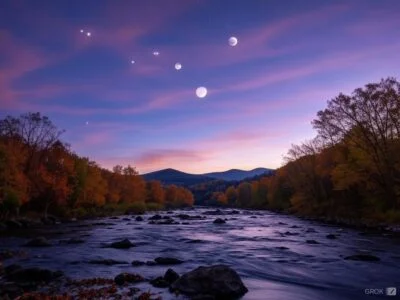
What Is Up and Special in the Shenandoah Sky?
Get ready, stargazers! The 2024/2025 season is lining up to be an extraordinary procession. First, we had the arrival of the Aurora Borealis, putting on its lightshow in the Shenandoah Valley for the 2nd time in recorded history or the Valley. The first time being December 14, 1862, when both Confederate and Union troops witnessed the lights during the Battle of Fredericksburg. This stunning phenomenon, typically confined to higher latitudes, captivated onlookers, as the dazzling colors danced above the Rockbridge skies, a fireworks show to remember.
As solar activity peaks, at the end of the sun’s eleven-year cycle there will be more opportunities to witness the breathtaking phenomenon of the Northern Lights. Solar Cycle 25 is currently in its ascending phase, maximizing solar activity, anticipated to be at its peak around July 2025. Geomagnetic storms are predicted to extend further south than usual, providing stunning displays for regions, like the Shenandoah Valley, not typically accustomed to such sights. Keep your eyes on the skies, there’s more to come!

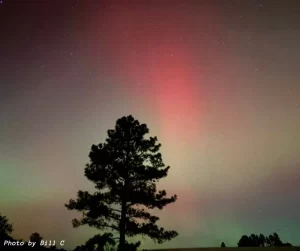

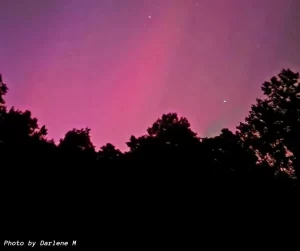
What’s Next in the Cosmos?
On January 21st, the entire Earth will witness an incredible alignment of our neighboring planets, in what is known as a “planet parade.” This event promises to be a spectacular display unlike any other—think of it as our planetary system’s version of a flash mob, the heavens dancing to its own unique gravitational pull.
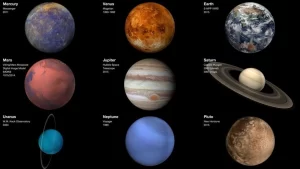
What is a Planet-Parade?
A “planet parade” occurs when several planets appear to line up in earth’s sky. While the planets aren’t actually physically aligned in space—that would cause an interplanetary traffic jam—their visual arrangement creates a stunning spectacle, capturing the imagination. This 2025 parade is special because it features Mercury, Venus, Mars, Jupiter, Saturn, Uranus, and Neptune—a lineup so impressive that just about any person you know or meet will be tempted to join us and look up from their phone for a moment to see something that has never happened before! The closest occurrence was in 185 BC when the Babylonians observed five planets. These early sky gazers in their tunics and curly beards were so dedicated to their starry-eyed pursuit that they meticulously recorded celestial events, on clay tablets! Imagine trying to explain to them that, nowadays, we have gone digital but we mostly just use our pocket computers to take selfies.
The Planet-Parade Timeline
Starting January 21st, six planets will be visible together for an event that has never happened before. Then, sometime around February 28, Mercury will appear, and all seven neighboring planets will align with Earth, for another “planet-parade” first!
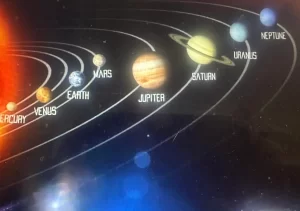
Introducing The Cosmic Planet Lineup
Here’s what you can expect during this stellar event:
- Venus: The brightest of the bunch, Venus is often referred to as the “Evening Star.” It will be shining so brightly that you might want to wear sunglasses at night.
- Mars: Known for its reddish hue. It will be strutting its stuff across the sky. You’ll be seeing red.
- Jupiter: The heavyweight champion of planets. It will be putting on a show. Just don’t confuse it with a streetlight; it’s much bigger and has more moons (over 79 if you’re counting).
- Saturn: With its iconic rings, Saturn is like a Hollywood celebrity—always ready for a photo op, dressed-up just so.
- Uranus and Neptune: These two planets are a bit shy and often require telescopes for a proper view. Worth the effort, part of the party.
- Mercury: The swift messenger of the solar system, Mercury, is set to join the planetary parade in late February 2025, and then grace the evening sky with its distinctive yellowish glow March 1 to March 14.
- Pluto: While some think it gets no respect, these days, after being downgraded to a “Dwarf Planet,” Pluto may indeed be living its best life. Space historians agree that on November 19, 2024, at 2:39 p.m. Eastern time, Pluto crossed over to Aquarius for a 20-year session. If you are keeping track with the current solar-based calendar, Pluto’s Aquarius phase should last for a transformative 18 years, 3 months, and 17 days.
As for the moon…
Not to be left out, the moon, which consistently gives us its own light-show every 28 days or so, graces the beautiful Shenandoah Valley with a “Wolf Moon” on January 13; this is followed by a “Snow Moon” lighting up the sky on February 12. Let’s not forget that at any time this winter, the Moon could be accompanied by the mesmerizing hues of purple, green, and red from the Aurora Borealis, also known as the Northern Lights! Whether you favor Gregorian, Julian, or lunisolar calendars—or even if you track time with a sundial and a turtle—it’s becoming increasingly hard to overlook the positive signs paving the way for a joyful journey ahead.
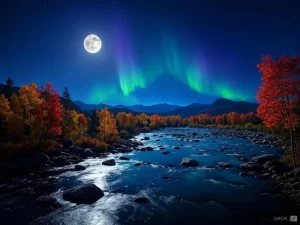

Planet-Parade Viewing Tips
To catch the cosmic show at its best, here are some tips:
- Look towards the southern horizon and scan the sky from left to right (east to west) to identify each planet.
- Late February: Even astronomy experts do not know exactly when Mercury will appear, but the consensus is that the record of six planets aligning on January 21st will be broken when Mercury joins the party on one of the last days of February.
- Location Matters: Find a dark open area, as far away from the city and cement as possible. If you can see the Milky Way, you’re in a good position.
- Best Viewing Times: Ideal times for beginning observation will be shortly after sunset. Most planets will remain visible until about midnight, with some lingering until dawn.
- Perfect Timing: If you must choose a single moment for viewing the planetary parade, all planets except Mercury will be visible and easier to see due to decreased light pollution around the new moon on January 29th. Visibility should also be excellent in the days close to the new moon on February 27th. A new moon is the opposite of a full moon and occurs when the moon is positioned directly between the Earth and the Sun. During this phase, the side of the moon facing Earth is completely dark because it is not illuminated by sunlight. This makes it an ideal time for star and planet visibility, as the absence of moonlight allows for clearer views of celestial objects in the night sky.


Why It’s Unlike Any Other Time
While “planet parades,” of two-to-four planets, have occurred every few years throughout history, the last record of five planets in a row was set way back in Babylon, 185 BC. Now, in 2025, we are poised to set back-to-back records! Six planets will align on January 21st, followed by the blue-ribbon lucky-7 record on a date soon after; not precisely determined. The best guess is February 28th. Plan to stargaze “early-and-often” from January 21st onward!
Final Thoughts
Perhaps this celestial parade isn’t just about the alignment of planets. Maybe it’s a vibrant demonstration of how everything—from tree roots and brain cells to twinkling stars and “the singing toad”—creates the Grand Creation, or the beauty of physics, if you prefer. This interconnectedness of the universe resonates in our inner beings and deep within a collective consciousness. The beauty and connectedness invite us to feel that we are not merely passengers on a spinning ball, but active participants in the intricate dance of life. How like the stars we are!





